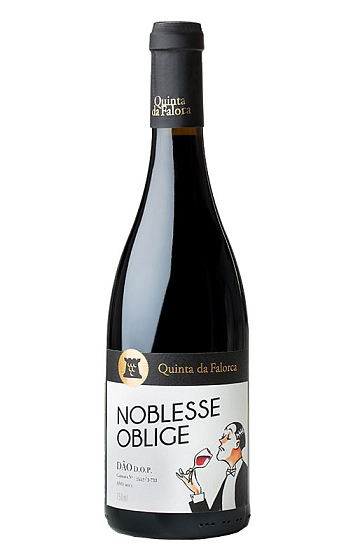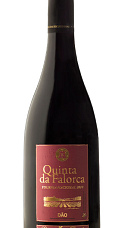Quinta da Falorca Noblesse Oblige 2011
Descripción
Quinta da Falorca Noblesse Oblige 2011 está elaborado a partir de Touriga nacional y otras variedades de viñedos ubicados en la región de Dao. El nombre del vino alude a la expresión francesa "Noblesse Oblige", traducida literalmente como "Nobleza obliga", que significa que quien se considere noble debe comportarse como tal. Mark Squires, crítico de Robert Parker, insiste en la similitud de este vino con los tintos de Borgoña y puntuó esta añada con 95 Parker.
Ficha técnica
Cata
Viñedo y elaboración
Opinión de los críticos
The 2011 Noblesse Oblige "Quinta da Falorca" is a field blend (although about 60% is Touriga Nacional), with only about 20% of the juice aged in new French oak for 24 months. It comes in at 14% alcohol. This takes two barrels of the Old Vines Garrafeira (also reviewed) and then adds juice sourced from a field blend of Falorca's 40-year-old vines. This and the Garrafeira have somewhat flipped positions in one respect since I first saw them. This now seems slightly more concentrated, a little less silky. Its power and precision have come to the fore, while it still has integrated everything better, but that's not the real point. They are very close there. The juicy and complex finish here is impressive, but that's not the real point, either. They both do that well, too. The real point is that, the next day, this was just bursting with red fruit flavor, cherries and raspberries. The flavors just exploded on the palate. All the fruit remained fresh and lifted, though, never sweet or sappy. Like its Garrafeira sibling, it has a crisp, fresh edge, but its flavor is much more vivid, the oak impact notably less. In time, the Garrafeira may overtake it again—and it is a far more sensual wine—but for the moment, this is more interesting. This is the best Burgundy I've had in a while. Whoops. Yes, that's Dão, actually. You should try some. Tight and penetrating, this is built for the longer haul, but it is approachable now.






Finísimo
Es caro ,curioso , muy particular pero delicioso.Merece la pena probarlo al menos una vez en la vida.Me gustó
Très déçu :( Je trouve que ce vin est loin du rapprochement élogieux que vous faites avec les Bourgognes français... bcp trop cher.